Reflexive Verbs in Spanish
Reflexive verbs are essential for speaking Spanish naturally, especially when talking about daily routines, emotions, and changes in state.
What Are Reflexive Verbs in Spanish?
Reflexive verbs (verbos reflexivos) indicate that the subject is performing an action on themselves. They always include a reflexive pronoun (me, te, se, nos, os, se).
Key Rule: Subject = Object
Reflexive verbs are used only when the subject and object are the same. If not, the verb is not reflexive.
✅ Reflexive:
"Yo me lavo." (I wash myself.) → The subject (yo) and object (me) are the same.
❌ Not Reflexive:
"Yo lavo el coche." (I wash the car.) → The subject (yo) and object (el coche) are different
Common Reflexive Verbs in Spanish
Here’s a list of frequently used reflexive verbs, including some that must always be reflexive:
Special Cases (Always Reflexive)
Some verbs are always reflexive, even if the meaning isn’t literally "self-directed":
When NOT to Use Reflexive Verbs
If the action is done to someone/something else, the verb is not reflexive:
❌ "Yo me lavo el perro." (Incorrect—unless you’re washing yourself like a dog!)
✅ "Yo lavo al perro." (I wash the dog.) → Not reflexive because the action is on the dog, not yourself.
Quick Tip: Ask yourself, "Is the subject doing the action to themselves?" If yes → reflexive. If no → not reflexive.
List of Reflexive Verbs
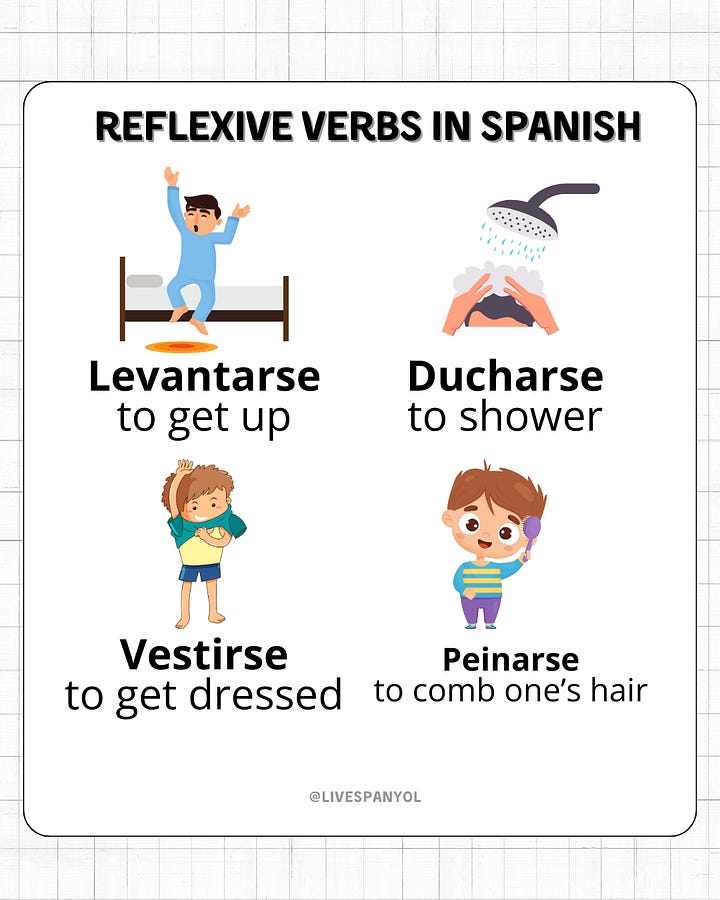
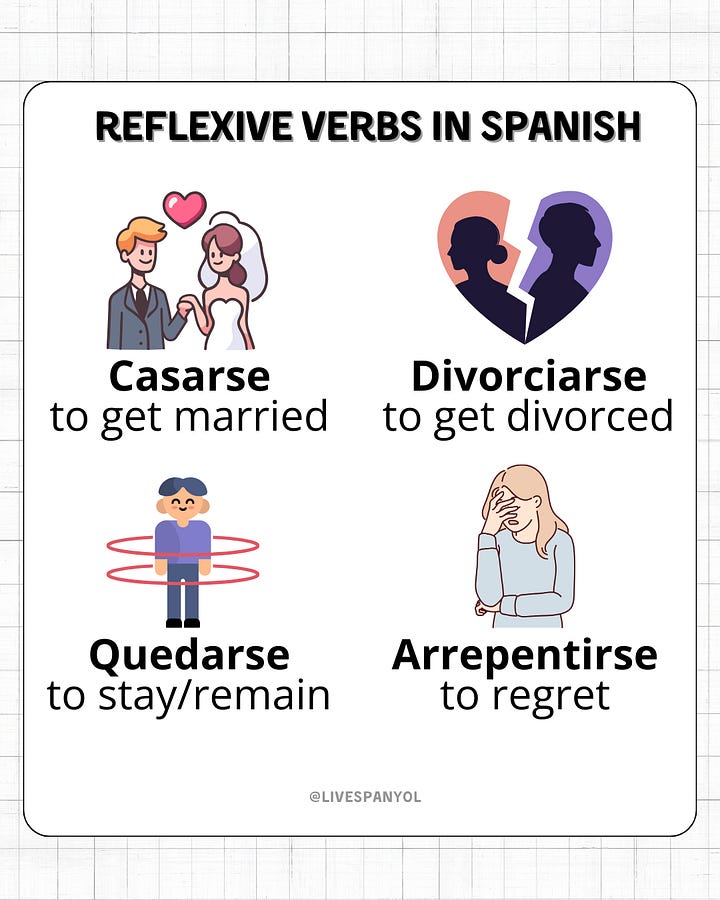
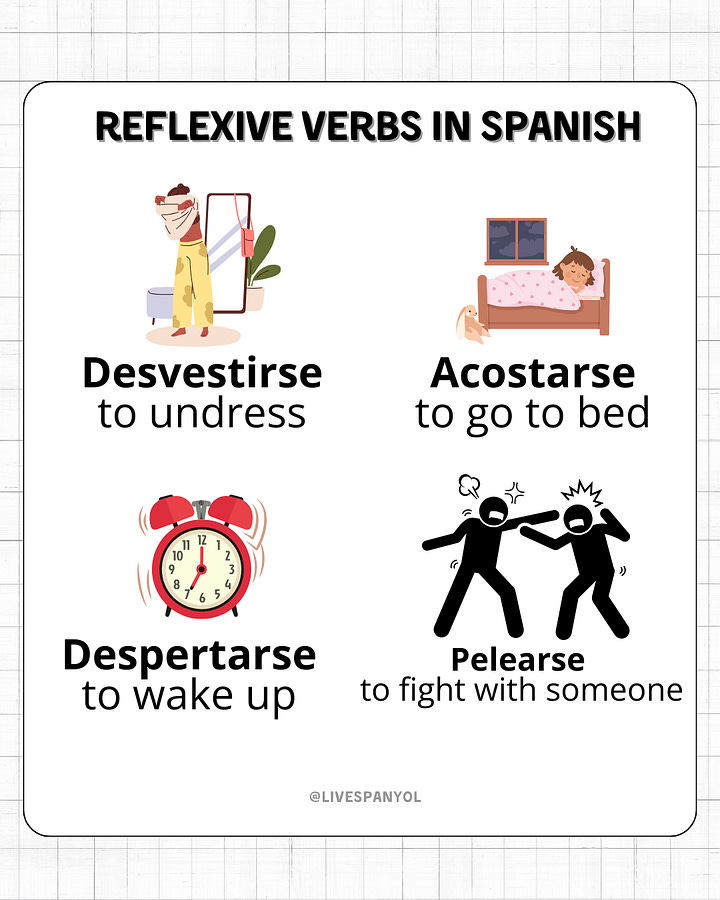
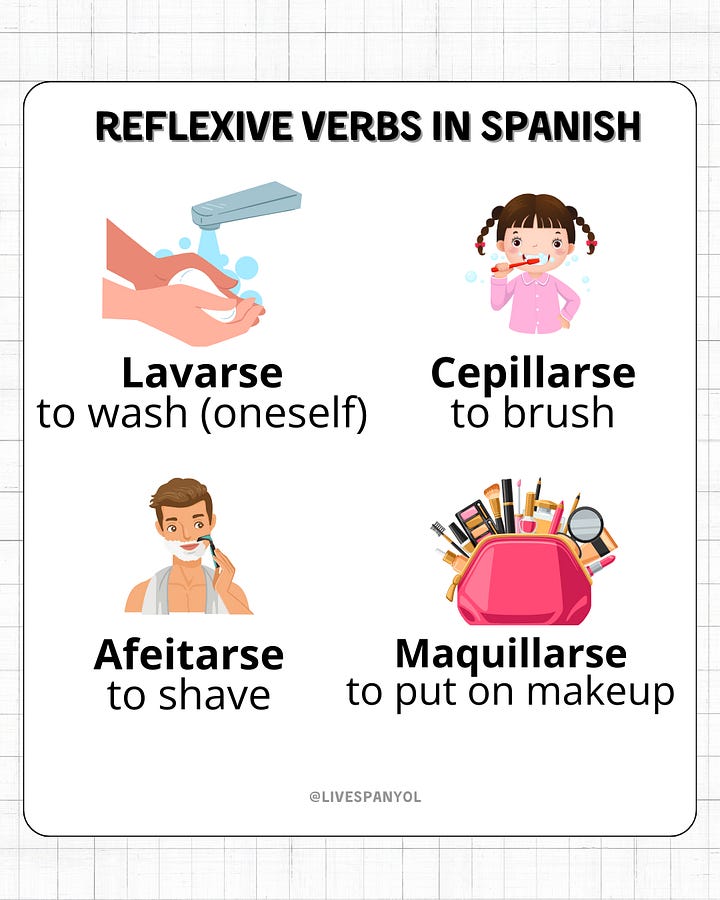
Practice with Wordwall Activities
Test your knowledge with these interactive exercises:
Match Pronouns to Reflexive Verbs
Instructions: Drag each pronoun to its correct conjugated verb.
Click here to practice.
📝 Spanish Reflexive Verbs Quiz (Multiple Choice Only)
Instructions: Select the correct answer. Pay attention to pronouns and conjugations!
Click here to practice.
🚀 Want to Learn More?
📅 Book a 1-on-1 Spanish Lesson with me! 👉 Click here to schedule!





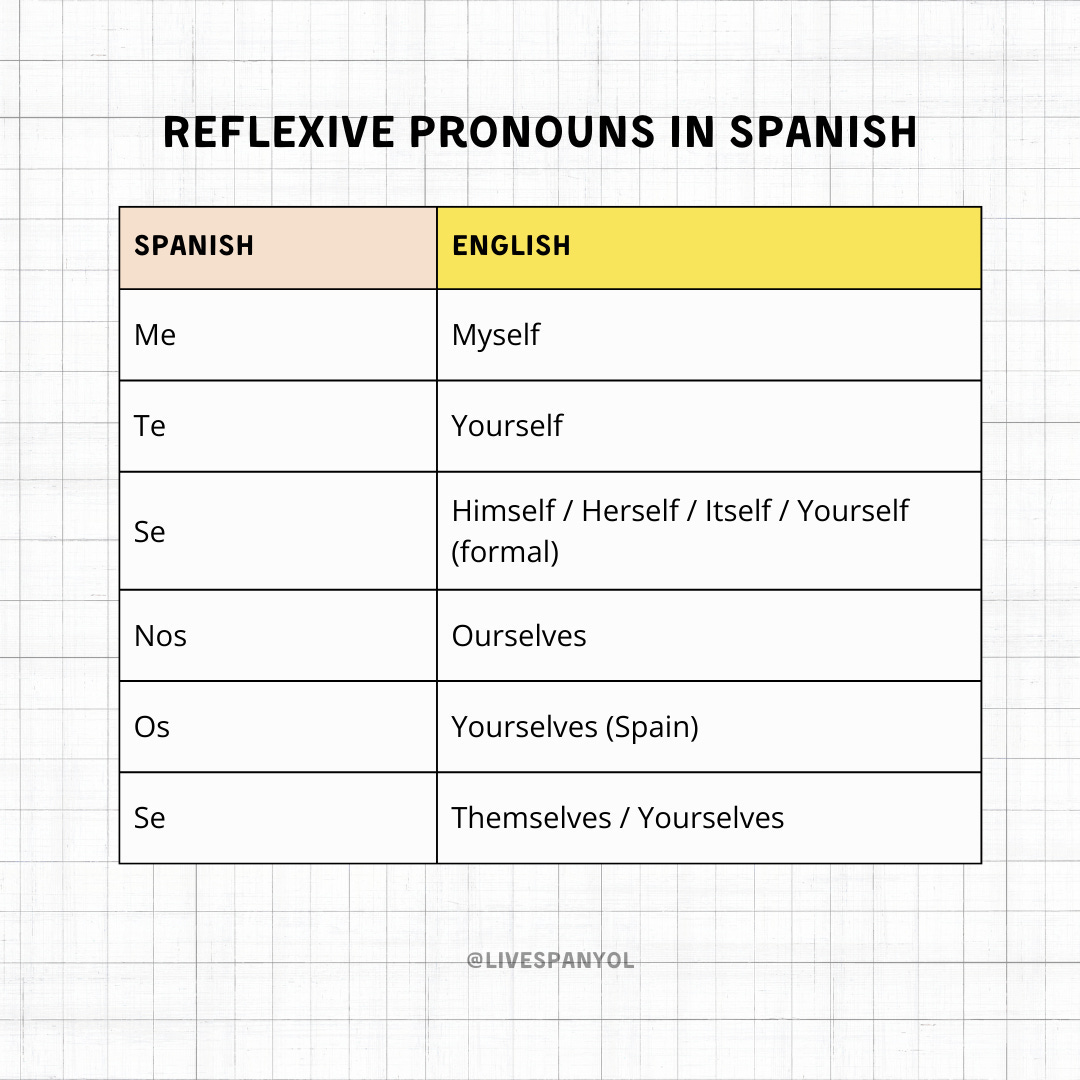
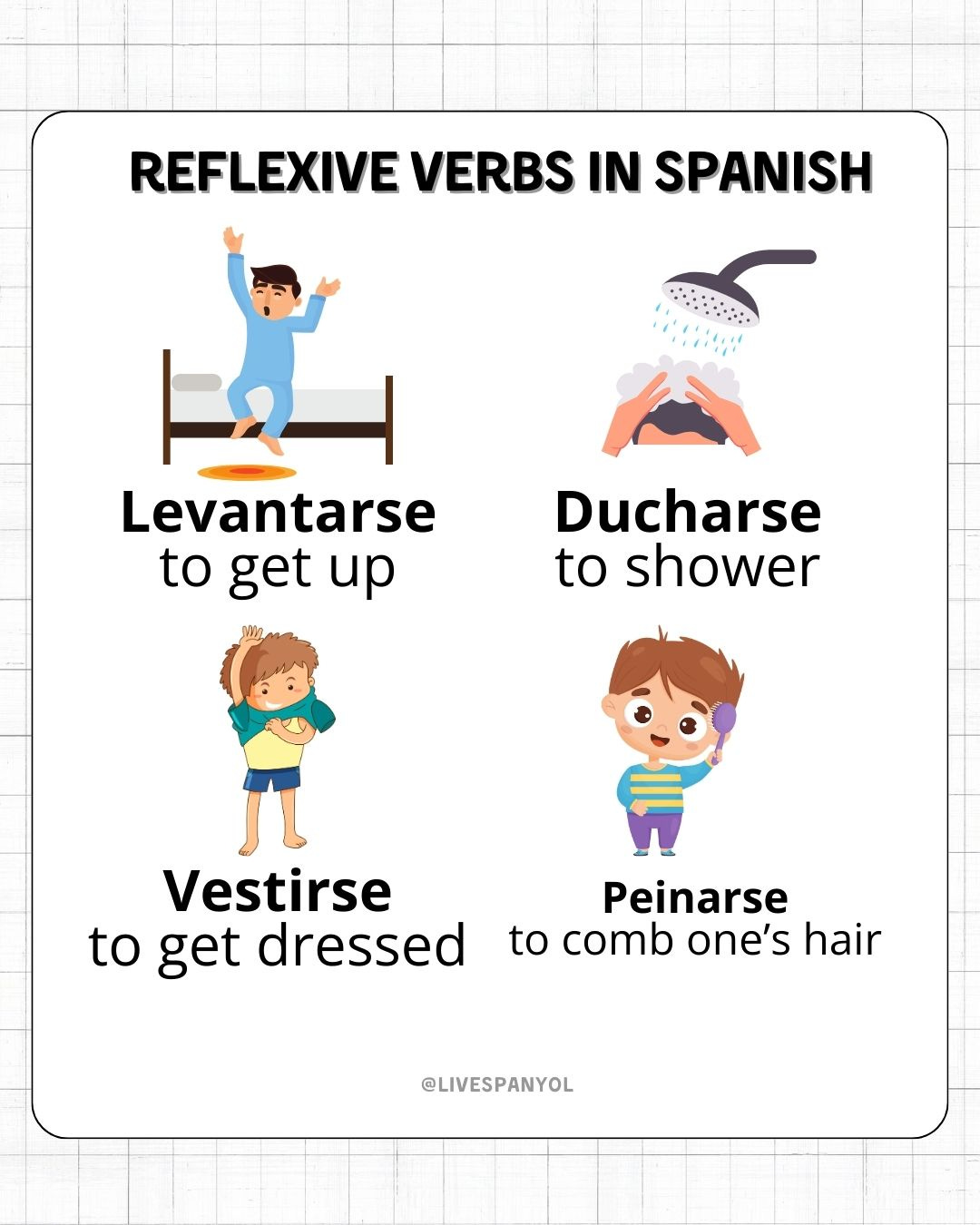
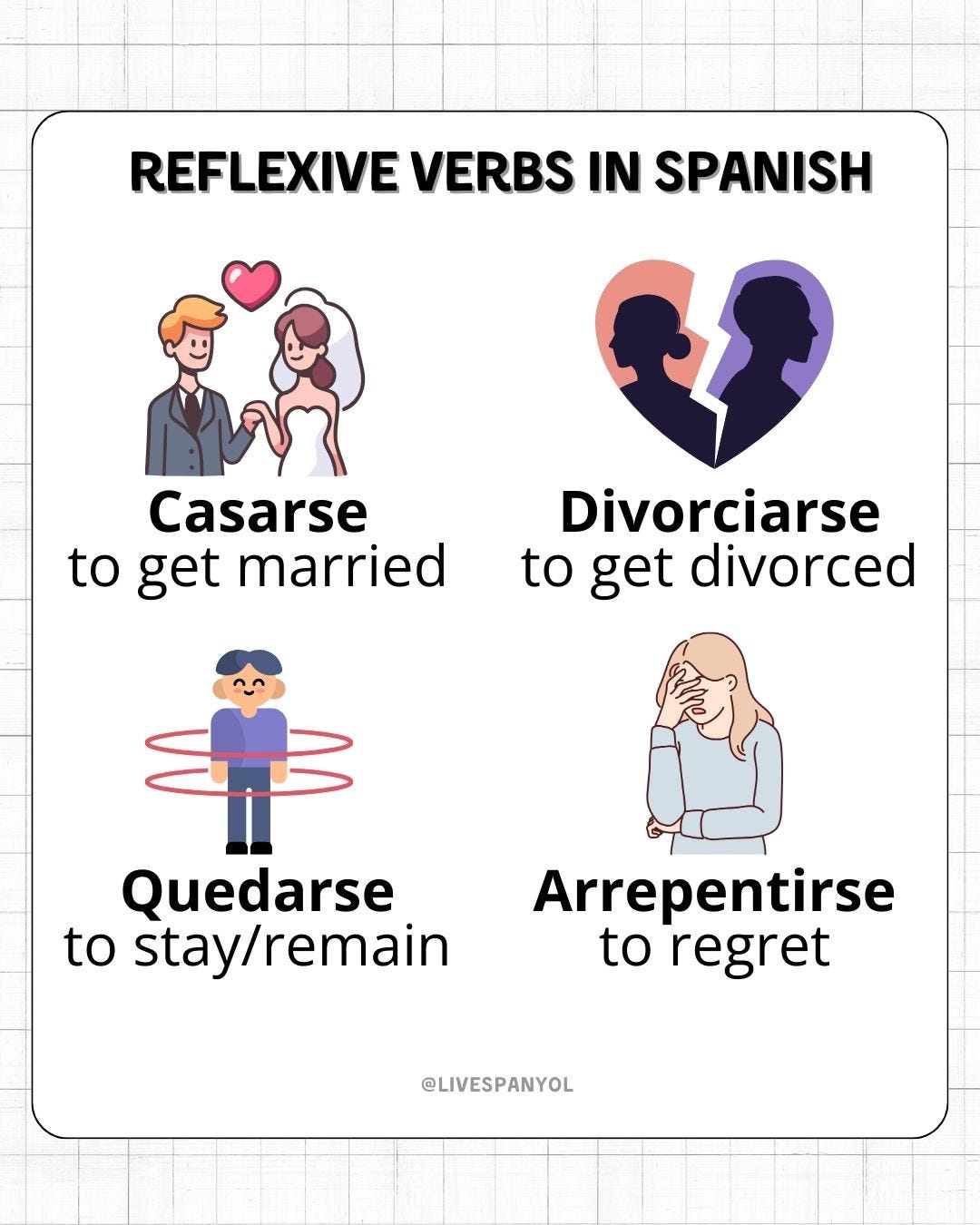

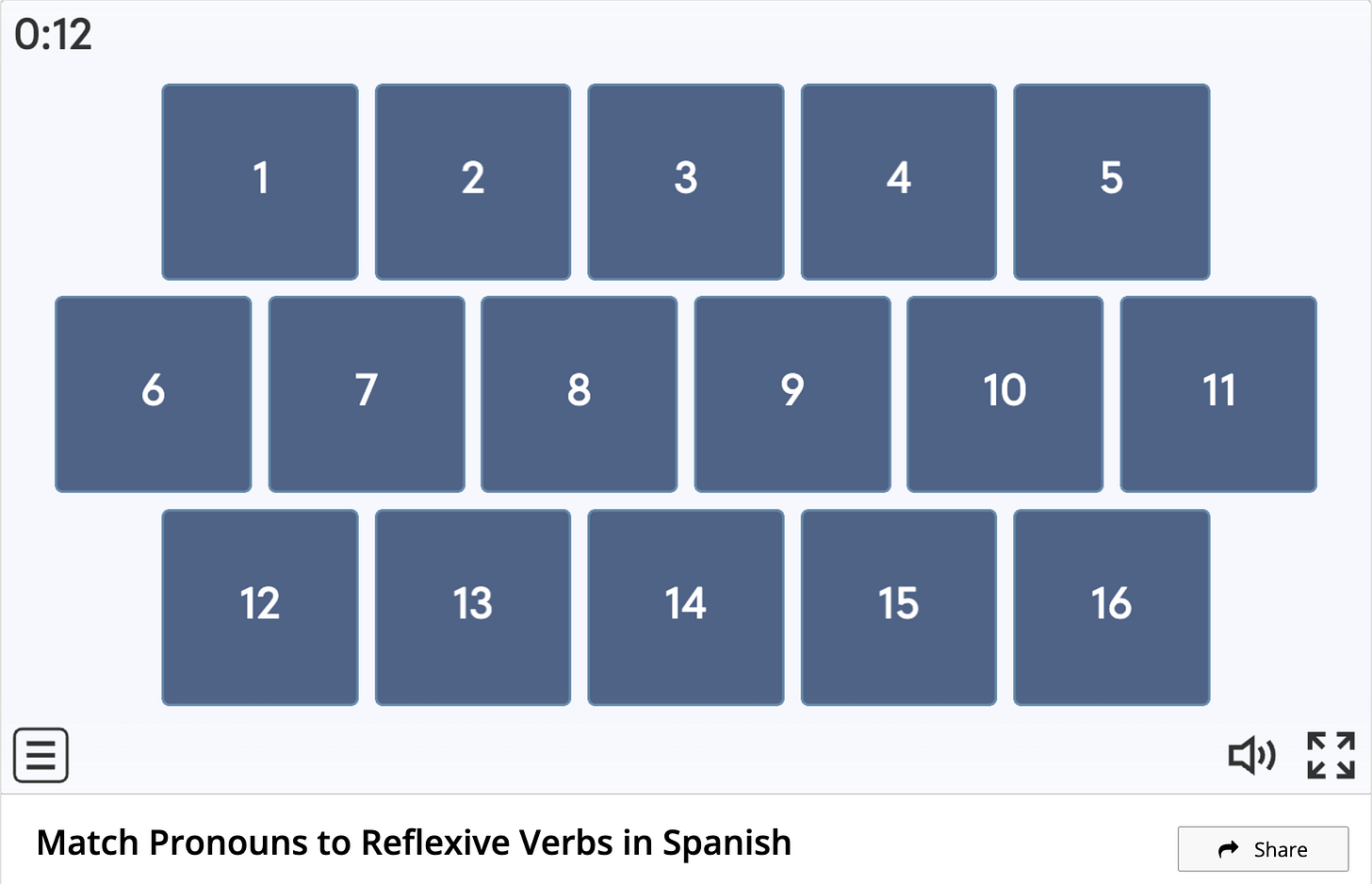

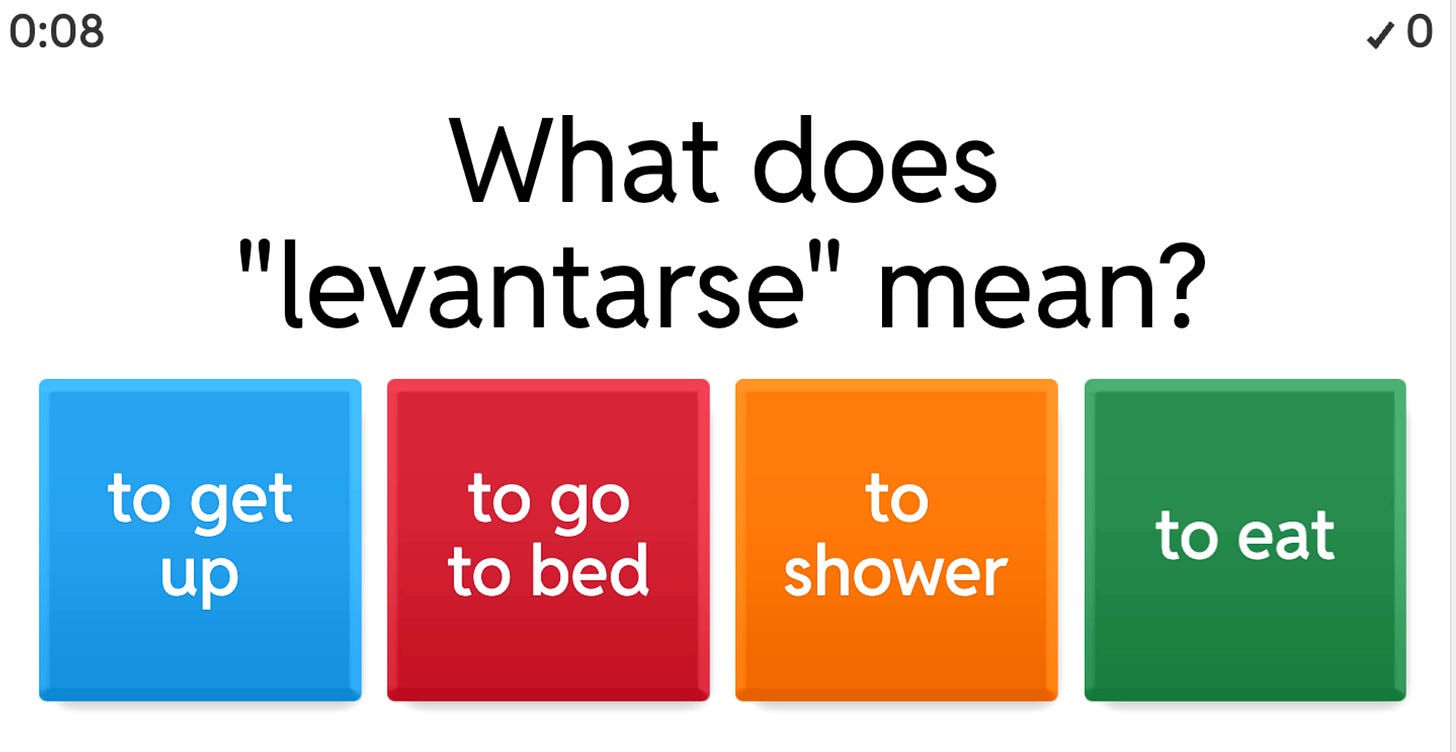
Hola Profesora (I am doing your worksheethts)-Lal 6/A